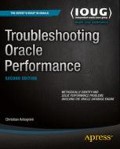Abstract
The query optimizer is one of the building blocks of the SQL engine. Its purpose is to produce efficient execution plans in a timely manner. The time constraint is essential because in most situations it isn’t sensible to spend too much time on the optimization phase. What does “too much time” mean? In general, the parse phase, which contains the work performed by the query optimizer, should be much shorter than the execution phase. The only situation in which having a parse phase longer than the execution phase is acceptable is when a cursor can be reused for many executions. As discussed in Chapter 2, the ability to cache the shared SQL area associated with a cursor in the SGA was also introduced for this very same purpose.
Access this chapter
Tax calculation will be finalised at checkout
Purchases are for personal use only
Notes
- 1.
A select-project-join query block is made up of three basic operations: a selection that extracts rows fulfilling specific predicates, a projection that extracts specific columns from the referenced tables, and a join that puts together data extracted from several tables. Filter and join predicates are based on simple operators like equalities. Example: SELECT t1.id, t2.n FROM t1 JOIN t2 ON t1.id = t2.id WHERE t1.n = 42.
- 2.
By default the _convert_set_to_join initialization parameter is set to FALSE.
Author information
Authors and Affiliations
Rights and permissions
Copyright information
© 2014 Christian Antognini
About this chapter
Cite this chapter
Antognini, C. (2014). Introducing the Query Optimizer. In: Troubleshooting Oracle Performance. Apress, Berkeley, CA. https://doi.org/10.1007/978-1-4302-5759-2_6
Download citation
DOI: https://doi.org/10.1007/978-1-4302-5759-2_6
Published:
Publisher Name: Apress, Berkeley, CA
Print ISBN: 978-1-4302-5758-5
Online ISBN: 978-1-4302-5759-2
eBook Packages: Professional and Applied ComputingProfessional and Applied Computing (R0)Apress Access Books

